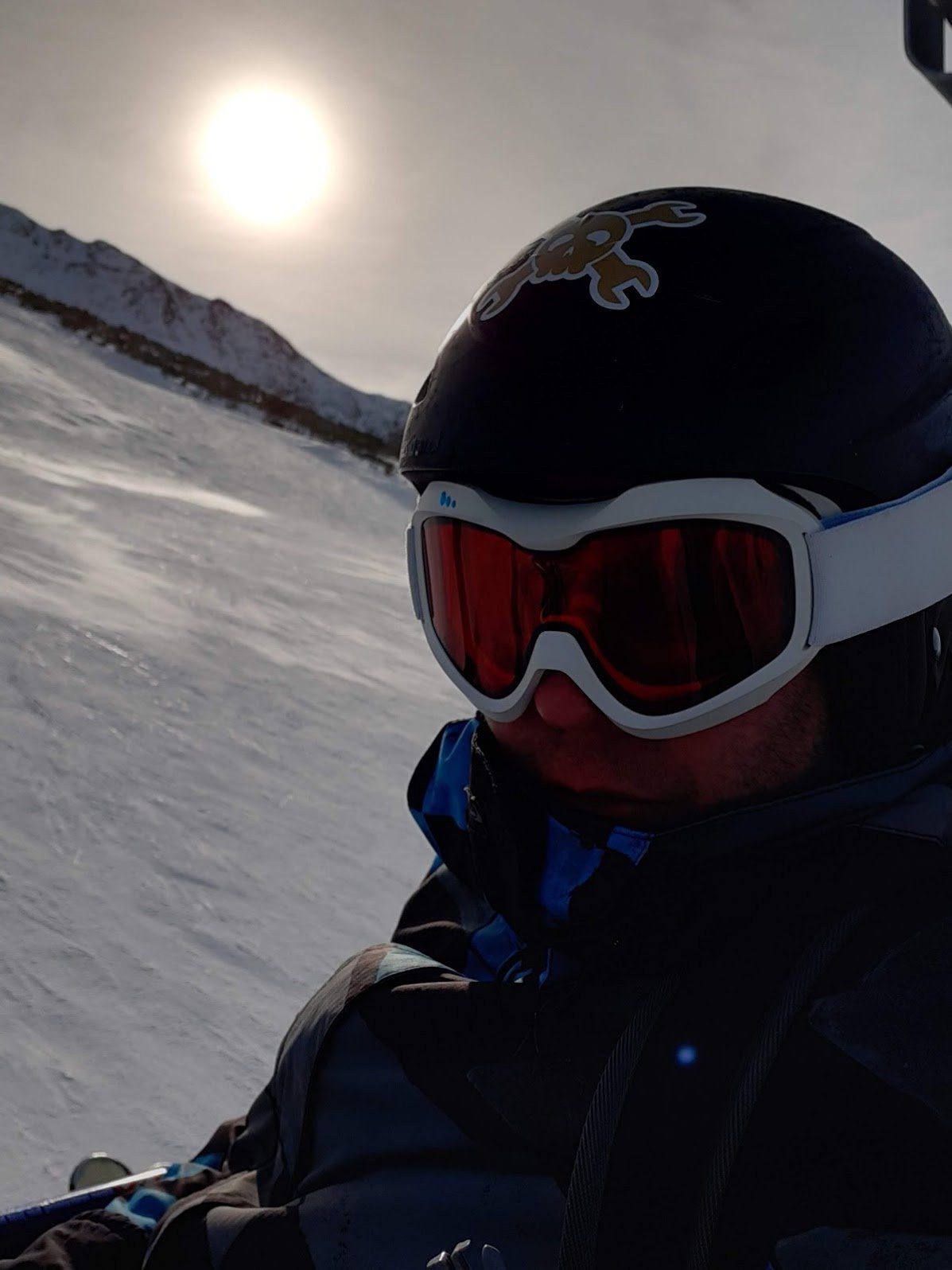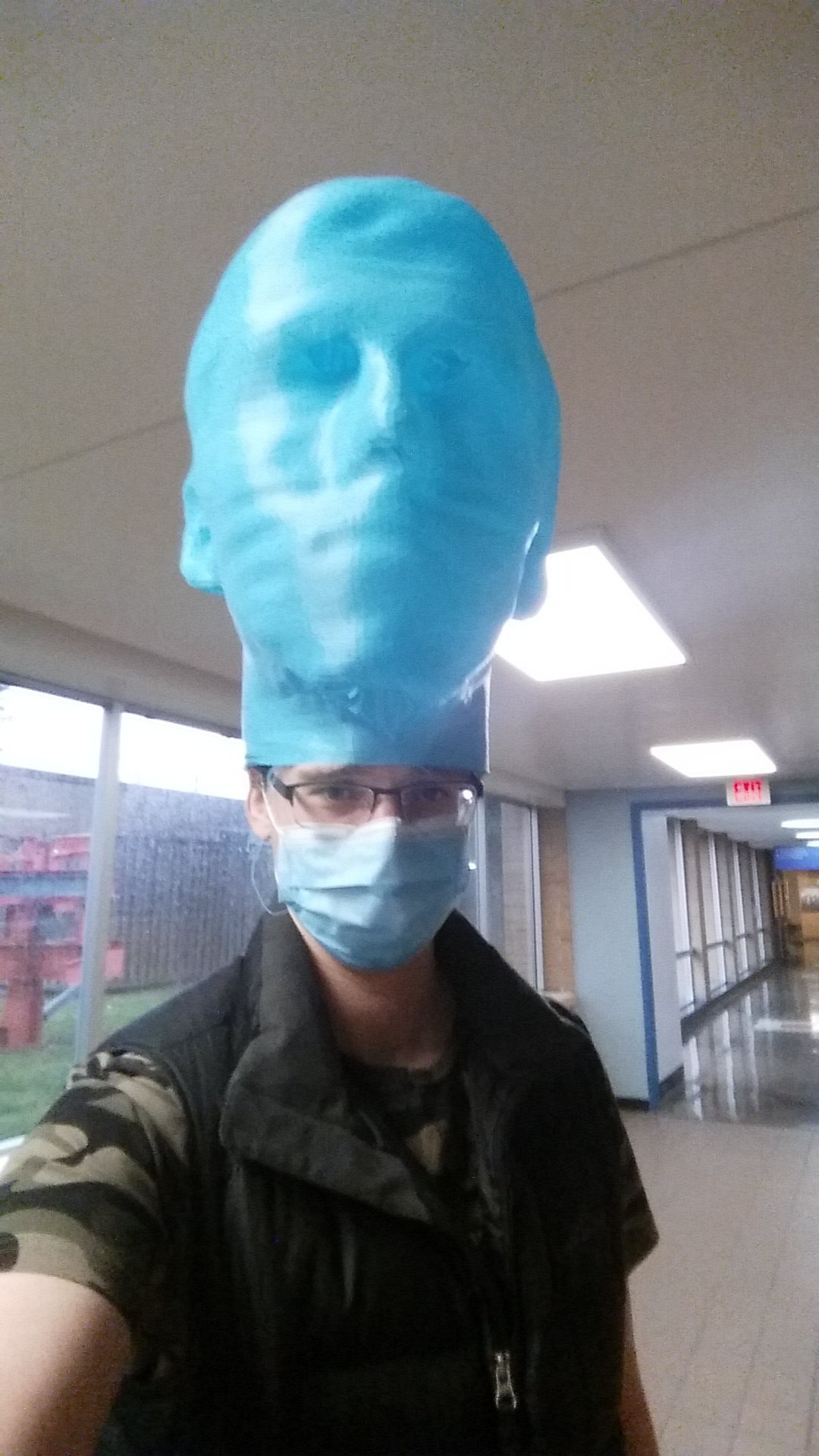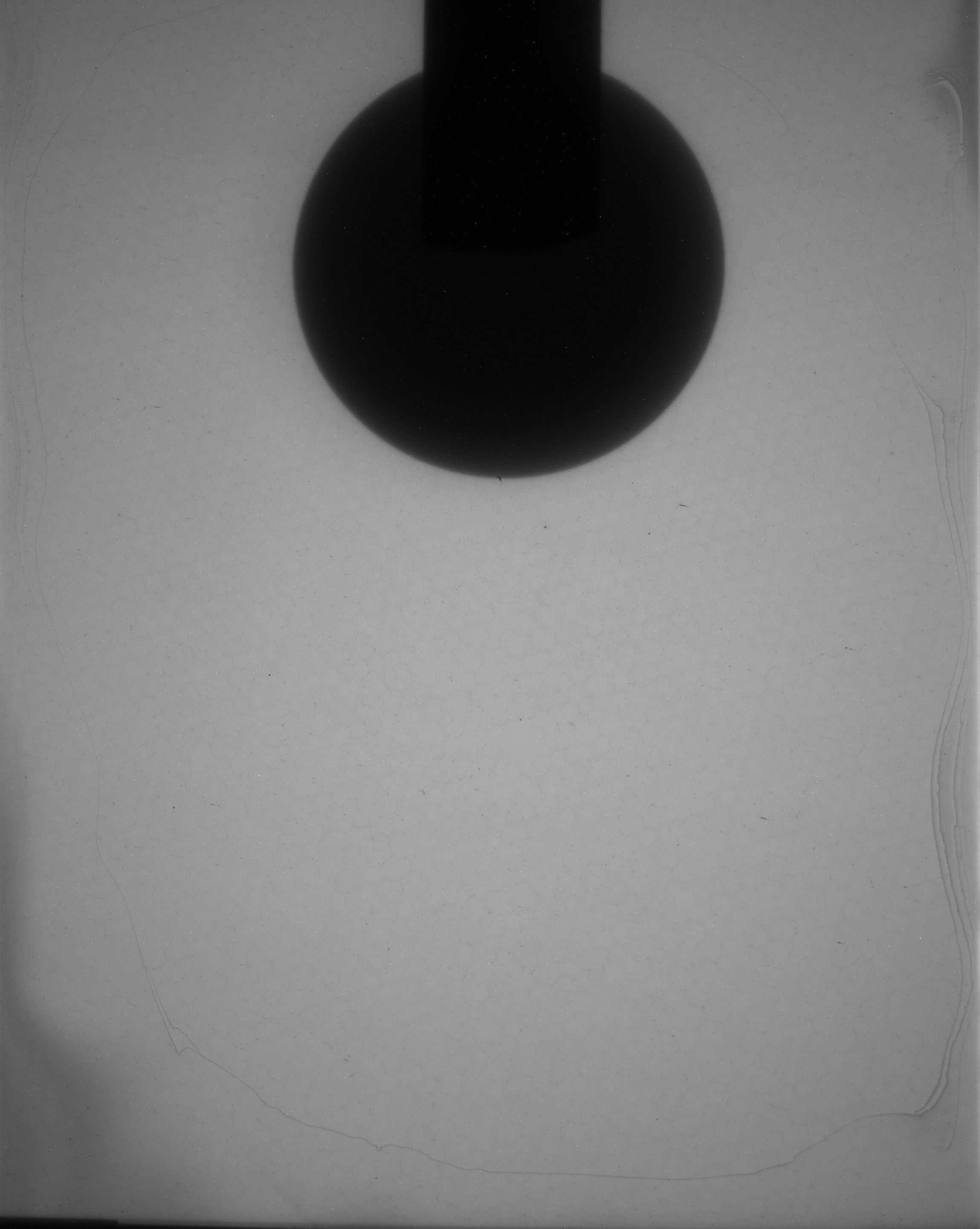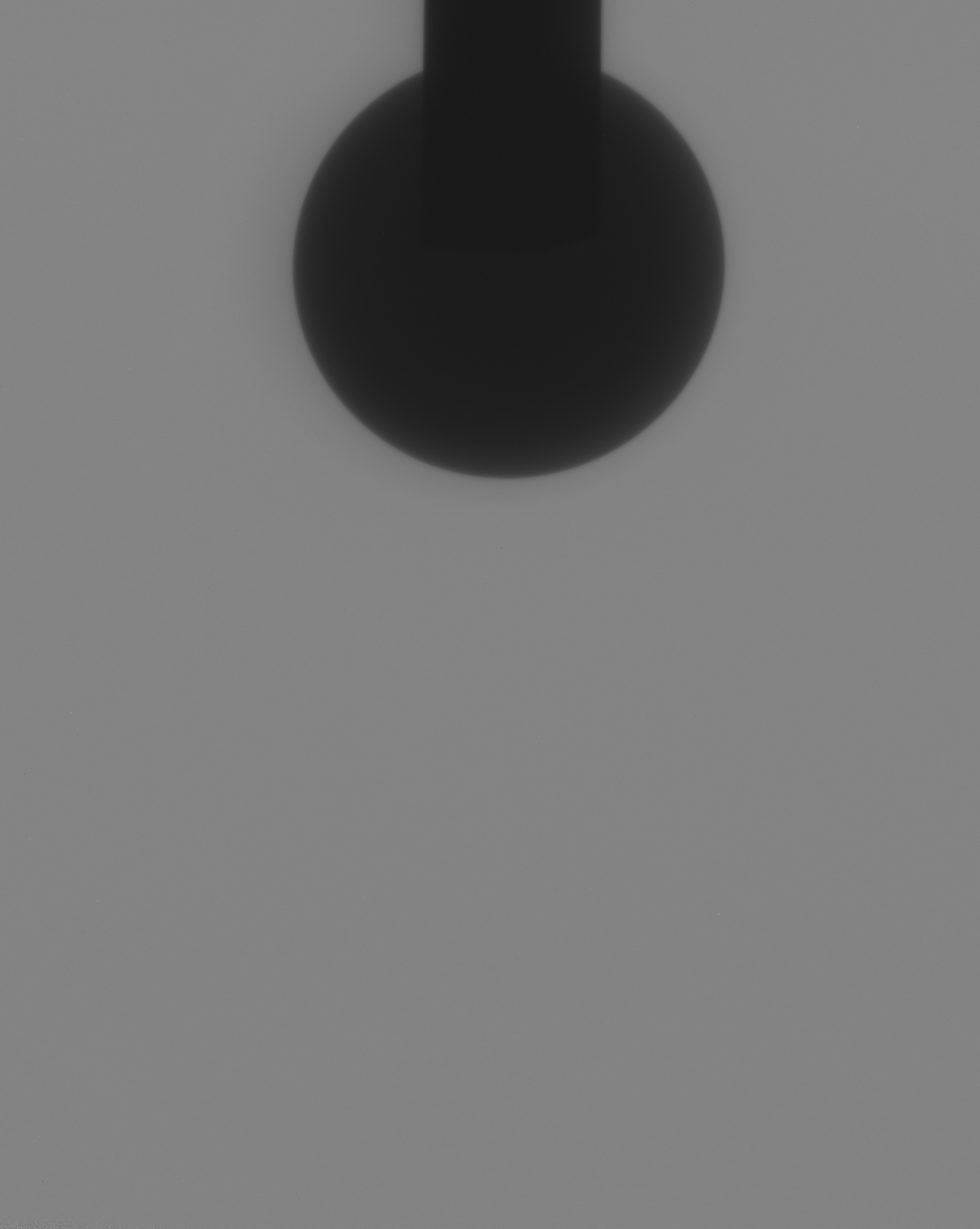
Dan Maloney 3:00 PM
OK, let's get things going. I'm Dan, I'll be moderating today along with Dusan as we welcome Ahron Wayne to the Hack Chat. Ahron has done some cool work with X-rays and CT to visualize ink on carbonized papyrus scrolls for the Vesuvius Challenge:
|

Dan Maloney 3:00 PM
https://hackaday.com/2023/11/02/2000-year-old-charred-manuscripts-reveal-their-secrets/
|

Dusan Petrovic 3:00 PM
Hello and welcome everyone!
|

Dan Maloney 3:01 PM
Welcome to the Hack Chat Ahron. Can you kick things off with a little about your background and how you got into the challenge?
|

Ahron Wayne 3:01 PM
@anfractuosity I'm a bit of a broken record in The Challenge talking about the wavelength you've mentioned --- Thz are PERFECT for ink-paper discrimination and that kind of thing because they can make it through the material while being influenced by the chemistry of organics (i.e contrast between paper and ink). The only annoying thing is it's really hard to make and detect the frequency (thz gap)
|

Ahron Wayne 3:01 PM
Hi Dan! Thanks for inviting me
|

anfractuosity 3:02 PM
ahh, thanks a lot
|

Ahron Wayne 3:03 PM
So my background is a bit varied. I'm mostly biologist by training but I do industrial X-Ray CT as my main job. While there I was curious about whether you could look inside a pack of pokemon cards (coming full circle to my teaser a couple days ago), and this led me to the herculaneum scrolls --- it's a very similar problem. I reached out to some of the original authors, especially Stephen Parsons and developed a good relationship. Later I saw the vesuvius challenge on the news, I mentioned it to him, and he told me to join
|
|
hannes.hoffmann 3:04 PM
Thz was a thing at least since 2016. I had been sending this paper to people involved at the time: https://www.nature.com/articles/ncomms12665
|
|
hannes.hoffmann 3:04 PM
nothing quite came of it
|
|
hannes.hoffmann 3:05 PM
i understand the depth discrimination hasnt gotten better
|

Ahron Wayne 3:05 PM
@hannes.hoffmann I think it's more of an applications thing than anything --- CT is so well researched and developed that it's relatively easy to find a machine to throw your scroll in (though the scrolls were scanned at the Diamond light source). Everything THZ is basically custom.
|

wilkij1 3:06 PM
What accelerating voltage did you use? And what sort of detector?
|
|
CLamb 3:07 PM
There is a similar problem with imaging motion picture film rolls which are too badly deteriorated to unroll. I imagine a higher resolution than for imaging scrolls would be required. The silver in B&W film would be more opaque than the film base but discrimination of the dyes in color film would be difficult I am assuming.
|

anfractuosity 3:08 PM
isn't colour film, done with layers per colour, or am i imagining that
|
|
CLamb 3:08 PM
That's how colour film is done.
|

Ahron Wayne 3:09 PM
So the Vesuvius challenge has its own dataset --- the real scrolls, from the volcanoes, were scanned at the Diamond light source, a synchotron. Basically a super advanced lightbulb for x-rays. You can get a monochromatic (single wavelength) that way --- I believe the first scroll was scanned at 58 khz, with a cool detector as well.
In my lab experiments, next to me I have a GE Explore Locus SP with a Kevex PXS-925 x-ray source (very old and mostly broken) that I mostly run at 60kv. The detector is also pretty weird because back then they had to couple the scintillator to the detector with a bundle of optical fibers.
|
|
CLamb 3:09 PM
A minimum of four layers but I know of films with up to seven.
|

Ahron Wayne 3:10 PM

|

Ahron Wayne 3:10 PM
The machine I have next to me --- from ebay
|

anfractuosity 3:10 PM
Is 60kV fixed, or can you lower that? The fibers protect the sensor i think?
|

Ahron Wayne 3:10 PM
(with the lead cover on of course :) )
|

Ahron Wayne 3:11 PM
This tube can run from 40 to 90 kv. I mostly do it at the lower end to protect against wear/arcing, a common failure mode.
The optical fibers connect the scintillator (produces visible light from x-rays) to the sensor, which actually detects the light. In more modern systems there is a direct connection without said fibers
|
|
Thomas Shaddack 3:12 PM
Re the film, I think only three of the layers are silver-containing.
|
|
Thomas Shaddack 3:12 PM
And the silver gets dissolved after developing.
|
|
Thomas Shaddack 3:12 PM
So only the dye remains.
|
|
Thomas Shaddack 3:12 PM
Does the tube arc inside, or across the outer surface?
|

wilkij1 3:12 PM
Does that have a single channel detector? I'm guessing that having multiple fingers might mean multiple channels?
|

wilkij1 3:13 PM
Fibers
|

Ahron Wayne 3:13 PM
@Thomas Shaddack I imagine this would be an easier problem (famous last words) because the silver would be relatively opaque the x-rays. With the scrolls, ink and papyrus are basically the same --- the AI models need to use 3d morphology to discriminate the two
|

Ahron Wayne 3:14 PM
Here, let me give an image of the optical fibers on my detector (again, only for old systems)
|

anfractuosity 3:14 PM
Does it use a CMOS/CCD sensor then i guess behind the scintillator, what res is that?
|
|
hannes.hoffmann 3:14 PM
Is the 40 to 90 kv range continous? can you choose any level in between?
|

Ahron Wayne 3:15 PM

|

Ahron Wayne 3:15 PM
From the log: https://hackaday.io/project/191395-x-ray-ct-scanners-get-new-life/log/223337-image-offsets-ancient-scrolls-broken-shutters
A raw image of my old scintillator
The optical fibers are the hexagonal shaped segments
|

Ahron Wayne 3:16 PM
Yes, exactly, there is a CCD beyond the scintillator. In this system the pitch is 23 microns and about 2 by 2.5 k over a field of view of about 50 mm
|

Ahron Wayne 3:16 PM
So a SMALL detector! The modern industrial ones I use at work can be multiple feet wide. This system is from 2003
|
|
CLamb 3:17 PM
I imagine it would be too much trouble to route each fiber to a unique pixel in the sensor.
|
|
Thomas Shaddack 3:17 PM
I think I saw a DIY method with a scintillator plate, 45-deg angled mirror so the sensor is outside of the beam path, and an ordinary lens-camera.
|
|
Thomas Shaddack 3:18 PM
Plate from an xray film cassette.
|

Ahron Wayne 3:18 PM
I'm not sure if they actually go to that much trouble to connect each pixel to a fiber, but it was crazy what they had to do back then. Incidentally, that image pretty much goes entirely away when you do a flat-field correction.
|

Ahron Wayne 3:18 PM

|

Patrick Hickey 3:18 PM
i love the optical properties of a fiber optic taper, often used in night vision goggles too. in 2001 I was using one to couple bioluminescent light from a biochip to a ccd. greetings from Scotland!
|

Ahron Wayne 3:18 PM

|

Ahron Wayne 3:19 PM
@Patrick Hickey, cool! That's exactly what one of the original designers called it, an optical taper. They must have been all the rage!
|

Dan Maloney 3:20 PM
Hi @Patrick. Those tapers are the same thing dentists and surgeons have on their magnifying glasses, right?
|

Ahron Wayne 3:21 PM

|
|
CLamb 3:21 PM
I'm wondering about other possible ways for a home CAT scanner. Does it seem reasonable to take a non-scanning X-ray machine and add a mechanism to take images from many angles and then process them?
|

Ahron Wayne 3:22 PM
https://www.rp-photonics.com/fiber_optic_tapers.html
I think the purpose was because they couldn't make large enough CMOS/CCD chips easily, and it was a way to increase the field of view and have a larger detector.
|
|
Thomas Shaddack 3:22 PM
Array of parallel optical fibers, fused and drawn to thinner crosssection.
|
|
Thomas Shaddack 3:22 PM
I believe the usual way is to put the sample on a rotary table, and take lots of photos at different angles and then feed it into the CT algorithm.
|
|
Thomas Shaddack 3:23 PM
Could it be considered a sibling method to photogrammetry? 3d scanning but through volume?
|

Ahron Wayne 3:24 PM
Yes, this is basically how CT works. The hard part for a basic system is the source and detector. Once you have those, you can plop a part on a microwave turntable if you want and get to work
|

anfractuosity 3:24 PM
@CLamb i think Krasnow made one with a phosphor screen - https://benkrasnow.blogspot.com/2013/01/diy-x-ray-ct-scanner-controlled-by.html
|

Ahron Wayne 3:24 PM
Photogrammetry uses identifiable features as reference points. Most CT recon uses a high pass filter make edges and then schmears those edges across a rotation
|

Ahron Wayne 3:25 PM
Yeah, he CT scanned a chicken, LOL
|
|
CLamb 3:25 PM
Wouldn't also moving the sample in a third dimension improve the result?
|

Ahron Wayne 3:26 PM
(by the way, I also did a project with 3D micro reconstruction with a visible light camera, including photogrammetry but also depth from focus https://hackaday.io/project/169362-ladybug-beefy-3d-printer-motorized-microscope)
|

anfractuosity 3:26 PM
What's the angular resolution like with your scanner out of interest, < 1 degree? (not sure how you normally quote such resolution?)
|

Dan Maloney 3:27 PM
https://hackaday.com/2013/01/09/ben-krasnow-builds-a-ct-scanner/
|

Ahron Wayne 3:27 PM
There's a big argument about resolution, but a useful proxy is minimum voxel size. This system can go down to 6 microns, and one at work, 50 nanometers. SIgnal-to-noise is a whole different issue to tackle; my x-ray source is weak, so I mostly image at much larger voxel sizes to save time
|
|
CLamb 3:28 PM
What are the legal issues involved in owning and using an X-ray imager? I imagine some licensing is required in every USA state.
|

Ahron Wayne 3:28 PM
The scrolls for the challenge were scanned at 8 and 3 microns resolution. To do this on a lab CT machine over the whole scroll would take days, weeks, or months
|

Ahron Wayne 3:29 PM
It is indeed a state by state issue.
|
|
Thomas Shaddack 3:29 PM
Everything is legal if you don't get caught.
|

wilkij1 3:29 PM
@Thomas Shaddack X ray systems can arc internally or externally. The external are usually from a supply connector to the housing. Internal arc also occur and are often fatal for the tube. Systems that are off for a long time often recommend a conditioning warm up done at low kv and power to help prevent internal arcs.
|
|
CLamb 3:30 PM
@Thomas Shaddack If I make my work public I'll get caught.
|
|
Thomas Shaddack 3:30 PM
Sounds like an ion pump, sort of. Remove the residual leaked-in/outgassed molecules/atoms by ionizing them and then trapping them into anode/getter?
|

Ahron Wayne 3:31 PM
Thanks Wilki! yeah, the manufacturer has a routine they recommend for this tube. Since I run it at such a low kv and power, I usually just start it at 40 kv - no current for 10-20 minutes, then 50-60 kv at 10-20 microamps and call it a day. If I were imaging at a higher voltage and power you definitely have to be careful
|
|
hannes.hoffmann 3:31 PM
Days, weeks, or months?! Can you narrow that down b a bit?
|
|
Thomas Shaddack 3:32 PM
Can we use sensitive-enough current-voltage sensing to diagnose the tube vacuum?
|

Ahron Wayne 3:32 PM
The tubes are a wear item unfortunately. This one is from 2007, from ebay, was $1200... yoikes
|

anfractuosity 3:33 PM
wow, for the whole machine though too?
|

Ahron Wayne 3:33 PM
@hannes. 3 microns --- 10 times longer scan than 8 microns just by itself. And then the choice of source, detector and size of scroll are all factors. I'd say... a month on a machine at work to get the whole scroll at 8 microns resolution.
|
|
CLamb 3:33 PM
I've seen projects where ordinary consumer type tubes were used at excessive voltages to generate X-rays. I don't think that would work for this.
|

wilkij1 3:33 PM
Off overnight should get some warmup. Off for a week should get a careful warmup. My experience is mostly with a 150 kv, 80 kw system so it's probably much more severe.
|

Ahron Wayne 3:34 PM
The machine was $1500 (technically, 2 for the price of one) local pickup only, but both had dead tubes. So I needed to find a new tube seperately. Hence why I drive it so conservatively.
|
|
Thomas Shaddack 3:34 PM
We need diy glassworking people to step in. We could work around the trouble with filament by using a tungsten tip and heat it by induction from the outside. We could integrate a ion pump, just hook up high voltage and attach external magnet.
|

anfractuosity 3:35 PM
they also use synchrotron x-rays for imaging chips apparently, https://spectrum.ieee.org/chip-x-ray has some cool photos
|

Ahron Wayne 3:35 PM
At work the systems have top voltages of 130kv, 225, and 450kv. But modern systems that are meant for a lot more abuse. Back when this was made, the manufacturer basically said you should turn it on and leave it running all the time
|
|
CLamb 3:36 PM
What's the advantage of higher voltages?
|

wilkij1 3:36 PM
For good imaging you want a small focal spot where the x-rays are produced. Well overdriving commercial tubes do that?
|

Ahron Wayne 3:36 PM
More voltage = get through thicker, denser, higher atomic number stuff
|
|
Thomas Shaddack 3:37 PM
Used tubes often have a crater burned into the anode, ruining the spot size. Could external magnet deflect the beam a little, to a fresh portion of the anode?
|

Ahron Wayne 3:37 PM
My machine was for preclinical research --- biology stuff only mostly, though you can still get some cool 2D images
|
|
CLamb 3:37 PM
So, shorter wavelength photons?
|

Dan Maloney 3:37 PM
@Ahron Wayne, I may have missed this, but what's the working volume of your scanner?
|

Ahron Wayne 3:38 PM
About the size of a large walnut, or a lego guy
|

Ahron Wayne 3:38 PM

|

Ahron Wayne 3:38 PM
Or top half of a snickers bar
|

Dan Maloney 3:38 PM
Wow, a lot smaller than I thought. Fun Size Snickers for scale, lol
|

anfractuosity 3:38 PM
interesting, what was it designed for as that seems fairly small. Have you tried a pcb in it
|

Ahron Wayne 3:39 PM
It has a physical tungsten shutter that blocks x-rays for setting the exposure time
|

Ahron Wayne 3:39 PM
I've put in some electrical stuff, yeah, but not done any CT scans. Actually my calibration grid is a PCB
|

wilkij1 3:40 PM
How was the experience with the scanner's software? Did you depend on it fit most processing or were you working with the low level signals?
|

Ahron Wayne 3:40 PM

|

Ahron Wayne 3:40 PM
The copper pads are used to dewarp the detector (mostly from the optical taper mentioned earlier)
|
|
Thomas Shaddack 3:41 PM
What is the merit of using a piece of LCD display for a calibration grid, for submillimeter uses (eg. microscopy)? The glass has a very regular pattern of etched metallization on it, when the panel gets delaminated (easy on broken one, just peel off a shard after removing the polarizer).
|
|
hannes.hoffmann 3:41 PM
have you considered finding a sponsor for this?
|

Ahron Wayne 3:41 PM
Oy, the software was a nightmare to setup. I went through 3 computers and multiple images, and know more about windows XP now then I would ever like to. Some utilities just never ran, like the "shutter server". Had to connect directly to the motor and bypass it.
|

Ahron Wayne 3:43 PM
*disk images. The company that used to service the machine was very helpful though in sending me all the old utilities. Would never have been able to get it going without them.
I do the image reconstruction on the old XP machine and then bring it to a modern system and correct it some more with Fiji/imagej. I'm right now trying to get my own reconstruction pipeline working so I can have more control over that process as well
|

Ahron Wayne 3:44 PM
But yeah, I avoid working at the low-level whenever I possibly can --- like the detector uses a custom LVDS signalling method and while theoretically, I could have eventually reverse engineered it, it was a LOT easier to get the custom capture card of which there were 3 left sitting in a warehouse somewhere
|

Ahron Wayne 3:46 PM
In a way the project was sponsored by the Vesuvius Challenge Thanks!! I won one of the open-source contribution prizes that just about exactly paid for the machine, new source, and all the cables.
|

anfractuosity 3:47 PM
cool :) Is there such a thing as a solid state x-ray emitter, similar to how magnetrons can be replaced by solid state? (Not found anything from a quick google)
|

Ahron Wayne 3:47 PM
Anyone have any interesting ideas for what to scan? (Small, low density)
|

VALENTINE 3:48 PM
>> Anyone have any interesting ideas for what to scan? (Small, low density)
Unopened Scratchers
|

Ahron Wayne 3:48 PM
Solid state x-ray emission is a desired holy grail. Not my expertise but if you look at how we're just now getting to UV LEDs, there is a long way to go.
|

Ahron Wayne 3:49 PM
You and everyone else Valentine...
|

anfractuosity 3:49 PM
haha
|

anfractuosity 3:49 PM
a coin might be kind of cool, to see the 3d resolution
|

anfractuosity 3:50 PM
also a lock
|
|
CLamb 3:50 PM
Insects!
|

Ahron Wayne 3:50 PM
Ooh, I should at least do a 2D of a lock
|
|
Thomas Shaddack 3:50 PM
Packaged chips or transistors. See some kinds of damage (burned bond wires, namely, or voiding of the chip-to-frame solder.)
|

Ahron Wayne 3:51 PM
And I ABSOLUTELY need to scan more insects, I honestly don't know why I haven't yet
|
|
Thomas Shaddack 3:51 PM
What a buzz!
|

wilkij1 3:51 PM
Try the snickers bar and see if you can resolve the wrapper. I always find it interesting when a medical scan resolves clothing while I'm segmenting it.
|

Ahron Wayne 3:51 PM
Too much industrial stuff makes me feel like I'm working at home, though
|
|
CLamb 3:51 PM
Two broods of cicadas will be emerging in New Jersey this Spring. Should I catch a few for you?
|
|
Thomas Shaddack 3:51 PM
tooth.
|

Ahron Wayne 3:52 PM
Can absolutely resolve the wrapper
|

Ahron Wayne 3:52 PM
Sure, send me a cicada...
|

Dan Maloney 3:53 PM
Coincidentally, I'm working on an article about using film to replace the dead CMOS sensor in an X-ray cabinet designed for scanning chips and such.
|

Ahron Wayne 3:53 PM

|

Ahron Wayne 3:53 PM
Way ahead of you! (prof. son's baby tooth)
|
Hack Chat Transcript, Page 1
A event log for X-Ray Investigations Hack Chat
Unwrapping ancient mysteries, virtually.
 Tom Nardi
Tom Nardi
Discussions
Become a Hackaday.io Member
Create an account to leave a comment. Already have an account? Log In.